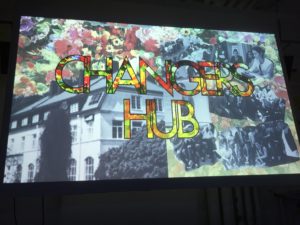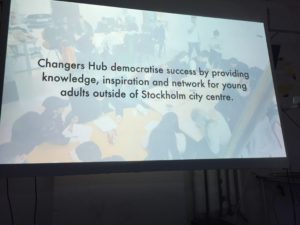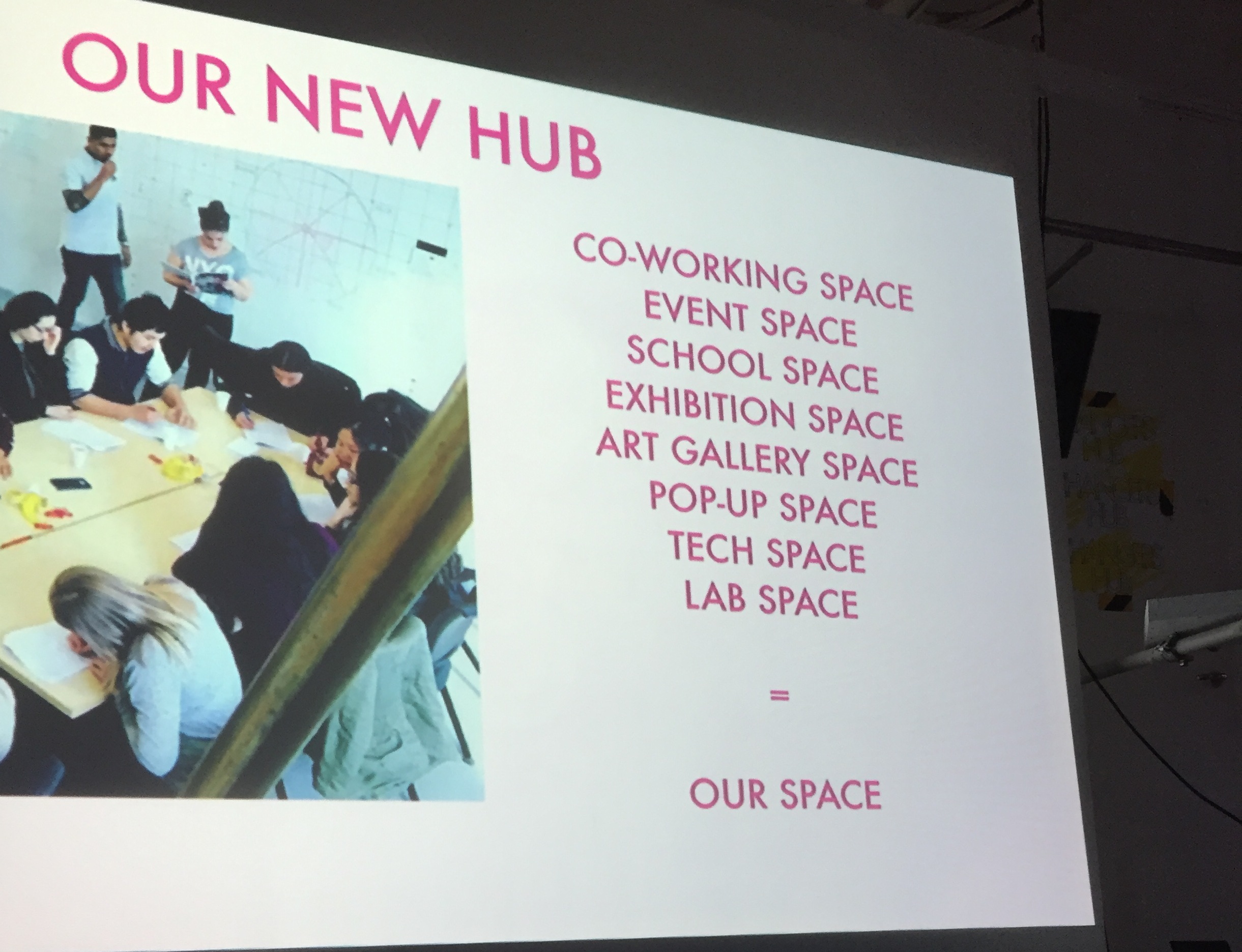Hi, yesterday I attended the Stockholm food movement event powered by Impact Hub Stockholm. Impact Hub Stockholm is a business incubator, innovation lab and community of social entrepreneurs.
This event focused primarily on how to produce and take care of food in a more sustainable way. Health was also a topic. Some of you guys blogged about testing out Matsmart and Karma, both were mentioned during the event.
Food is an essential part of every human’s life, we need it to survive. However, there are many issues related to food, while some scarcely have food enough to survive others suffers from overeating and risk deceases such as diabetes and cardiovascular dieses. Much food that is produced is wasted for various reasons. Since food is one of the biggest causes to climate change it important to make it more sustainable. A speaker remarked that the way we produce food today is “fucked up”. Another big challenge is the growing population where most people will live in urban areas. More people will put more stress on our planet and innovation related to food therefore becomes even more important.

On this event there was five presentations related to food and innovation. In different ways they attempt to solve some of the problems above.
The first presentation was from the team behind Gaia. They talked about their product: the Gaia Grow System™. Their goal is to make it possible to grow vegetables at home easier and more effective. They think that it is good that people living in urban areas can grow their own vegetables and thus get a closer connection to the way food is produced.
The product uses hydroponic technology, no soil is used, and the system is self-watering using nutritious water. It reduces the amount of water used to grow plants and should also produce results quicker since the plants gets the right about of nutrition. The people behind the produced talked about how they were currently looking for investments. Right now, they said they had pre-orders for about 3 million SEK.
Next up was Jenny Rydebrink, one of the co-founder of the app Garnenize . The app was a result of the founder’s own experience of growing plants and taking care of her garden. She found the problem that it was often difficult to keep track of what she had done, what was the name of the plants and where did she plant them. The app helps for example to keep a diary of the work done in the garden and to store or find information about plants.
How to grow food more sustainable was Gunnar Backman main topic. He is one of the founders of Nordisk Råvara and they won in 2016 the first prize in Vinnova’s competition for innovative climate-friendly food. They try to grow food locally, in a way that is more like how it was done in the past avoiding monocultures and chemicals. Gunnar also talked about the need to find plant-based alternatives to the many animal-based ingredients used today.
Theresia Silander Hagström and Oytun Yildirimdemir, co-founders of Eatit, were also there. They both have a background from KTH in industrial engineering and management. The app Eatit uses blood tests, food preferences and medical research to generate individualized recipes to help people eat healthier. To achieve suggestions, the app uses machine learning and AI. On their webpage they describe their app with: “Think of Eatit as your private physician, personal nutritionist and private chef – all in one place! Optimizing wellness is not mystery, it’s science.” They are currently testing their MVP.
The final speaker was Mårten Thorslund founder of Matsvinnet. He talked about how he started to get interested in food waste and how he is now running a webpage where he shares information and advice on how to reduce food waste.

Many in the audience seemed to have some business related to food and the atmosphere was very nice where people gave advice and recommendations such as features they might want to include, persons/organisations to contact or other businesses they might what to contact to partner up with.
During this event I talked to a guy studying to become a nurse who was there because he was interested in learning more about food sustainability. He talked about the huge food waste that occurs in hospitals and the need to do something about it.
I also met the co-founders of Enkla Kassen, Johannes and Patrik. This will be Johannes’ second startup and they just launched this new startup a few months ago. Their business aims to deliver climate friendly, fast to prepare, and inexpensive food bags. Currently they are targeting the Stockholm area and talked about visiting KTH to promote their business believing that students would be a good match for their product (might be a good chance for some free coffee if you manage to find them).
Thanks for reading,
Johan Wikström
Liked it? Why not to share then?



















